The Art and Science of Pet Bird Breeding Explained

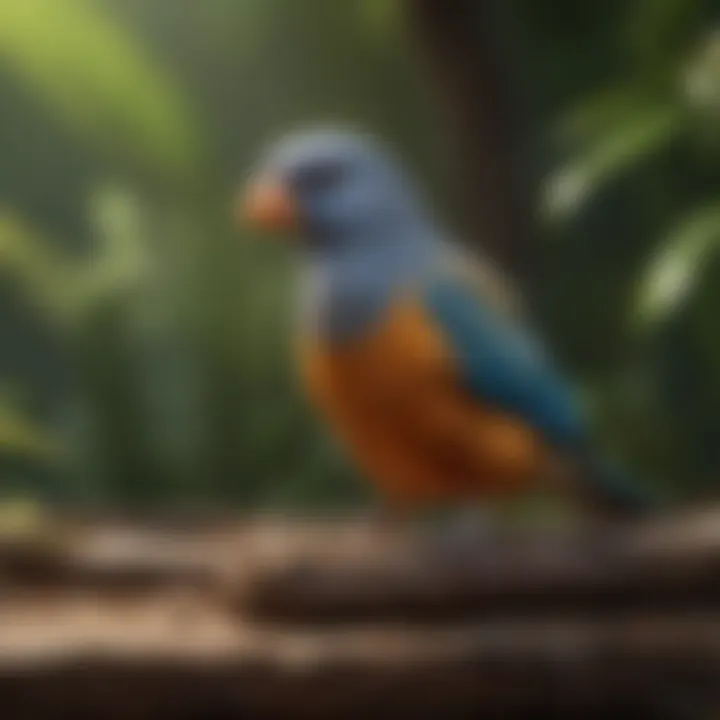
Intro
Breeding pet birds is no small feat; it’s an intricate dance between art and science. With the right knowledge and dedication, both novice and seasoned breeders can navigate through the layers of responsibility, commitment, and love required. The journey from selecting the right species to ensuring the well-being of your feathered friends can be both rewarding and challenging. It takes more than just desire to breed birds; it calls for an understanding of their behavior, care requirements, and the dynamics of breeding practices. This article serves as a guide to these complexities, shedding light on every aspect that could influence successful pet bird breeding.
Understanding Your Pet
Understanding your pet’s behavior and needs is foundational to successful breeding. It sets the stage for a harmonious life between you and your birds.
Pet Behavior Basics
Birds are social creatures; they thrive on interaction. It’s vital to observe how they behave in different environments. For instance, some might clamor for attention, while others prefer solitude. You’ll notice how they respond to various stimuli and their communication cues. Learning these behaviors enhances your ability to create a nurturing environment where they can thrive.
Common Breed Characteristics
Each bird species carries its own unique set of traits. For example, cockatiels are known for their affectionate nature, while budgerigars often display a playful, energetic demeanor. Recognizing these characteristics helps in matching birds for breeding, as compatible traits can lead to healthier offspring.
Species-Specific Needs
Every bird species has distinct requirements. Larger parrots may need spacious cages and ample playtime, while small birds might require simpler setups. Tailoring care to meet these needs ensures well-adjusted birds, which is crucial for the breeding process. Remember, a happy bird is a productive one!
Pet Care and Maintenance
Proper care establishes a solid foundation for breeding. Birds demand a carefully curated lifestyle that includes both physical and emotional considerations.
Feeding Guidelines
Nutrition plays a pivotal role in bird health, significantly impacting their reproductive success. A balanced diet featuring seeds, pellets, fresh fruits, and vegetables is essential. For instance, offering leafy greens like kale or dandelion can provide necessary vitamins and minerals. Also, don’t forget about clean, fresh water daily!
Grooming Essentials
Birds groom themselves, but it’s important for their caretakers to step in when necessary. Regularly clipping nails can prevent injuries and demeanor issues. Additionally, bathing opportunities enhance their feather health and bonding with you. You might want to set up a shallow dish for exploratory splashing or even a gentle misting.
Hygiene Practices
Maintaining a clean habitat is non-negotiable. Uneaten food and droppings can lead to illnesses. Regular cage cleaning, along with sanitizing toys and perches, protects their health. A tidy environment promotes a stress-free space, making it conducive for breeding.
Training and Development
Training is not just about teaching tricks; it also forms the backbone of a fulfilling relationship for both you and your bird.
Basic Commands and Skills
Start with simple commands like 'step up' or 'stay.' These not only aid in handling but also build trust. Regular practice, using positive reinforcement, leads to quicker learning and reinforces good behavior.
Behavioral Training Techniques
Gentle correction methods can address undesirable behaviors. For example, if a bird is overly noisy, responding calmly and providing distractions can show them there are better options. It’s critical to maintain patience throughout this process.
Addressing Common Behavior Issues
Birds may display problematic behaviors such as pecking or excessive screaming, commonly rooted in anxiety or boredom. Providing mental stimulation through engaging toys, or social interaction can reduce frustration and lead to a calmer pet.
Health and Wellness
Keeping your birds in peak condition is vital for breeding success.
Routine Vet Check-ups
Regular veterinary visits can make a world of difference. A vet experienced in avian care can catch underlying health issues before they escalate. Ideally, have a yearly check-up scheduled, particularly leading into breeding seasons.
Vaccination Needs
Some bird species need specific vaccinations to ward off diseases. Consultation with a vet will help determine what’s necessary, giving you peace of mind in your breeding endeavors.
Recognizing Signs of Illness
Knowledge of the signs of illness can be a lifesaver. Symptoms like lack of appetite, fluffed feathers, or unusual droppings can indicate health issues needing immediate attention. Staying informed can ensure quick action when needed.
Enrichment and Activities
Birds require not only a safe environment but also a stimulating one.
Indoor vs. Outdoor Activities
Indoor activities can range from flight exercises to puzzle toys designed to challenge their minds. Outdoor time in a secure area allows them to stretch their wings and explore fresh air, granting them a better quality of life.
Interactive Toys and Games


Provide toys that require problem solving, such as foraging toys or bells. These engage their minds and can prevent behavioral issues stemming from boredom. Rotate toys regularly to keep their interest piqued.
Socialization Opportunities
Encourage interaction with different species or humans to foster social skills. Regular, safe introductions can give them confidence and make breeding easier down the line.
Creating a well-rounded environment for your pet birds is not just about meeting their basic needs—it's about fostering their happiness and health, which will ultimately enhance your breeding journey.
Taking on the challenges of pet bird breeding is undeniably a substantial commitment. By understanding your feathered friends, ensuring their care and grooming, properly training them, maintaining health, and providing enrichment, you lay down the essential building blocks for successful breeding. Addressing their needs is not merely a duty—it's part of nurturing these vibrant creatures into thriving companions.
Understanding Pet Bird Breeding
Breeding pet birds isn't just a hobby; it's a delicate balance of art and science that requires patience, knowledge, and commitment. Gaining a solid understanding of pet bird breeding offers essential insights into the responsibilities that lie ahead. It’s more than simply pairing birds and hoping for the best—there are numerous factors involved that can make or break the success of a breeding program.
When one considers pet bird breeding, various aspects come into play. From determining the appropriate species to the robust knowledge of genetics, a breeder must be well-informed. This ensures that the process remains ethical and health-conscious, not just for the birds but for the future owners as well.
- Specific Elements to Consider: Breeders must evaluate multiple factors such as the health of breeding pairs, their compatibility, and how their genetics influence potential offspring.
- Benefits of Understanding Breeding: A well-informed breeder can select healthier, more resilient birds while ensuring the offspring inherit desirable traits. Moreover, this knowledge can aid in avoiding health issues that sometimes arise in breeding scenarios.
- Ethical Considerations: Knowledge is power. Understanding breeding encompasses ethical boundaries that prevent overbreeding or the neglect of bird welfare. This leads to responsible breeding practices, fostering a healthier avian community.
"Knowledge enables a breeder to craft better lives for birds, ensuring each feathered companion can thrive in a nurturing home."
Thus, this foundational understanding is vital, connecting various threads of bird breeding—from genetic backgrounds to practical breeding techniques.
The Role of the Breeder
The breeder wears many hats: caretaker, geneticist, and sometimes, a psychologist. They're the first line of defense when it comes to ensuring healthy pairs and, consequently, healthy chicks. A successful breeder must possess an in-depth understanding of not just their birds but also the environments they create for them.
In this environment, a breeder's choices take center stage. The selection of breeding pairs hinges heavily on physical and behavioral traits that enhance the likelihood of successful mating and rearing. Moreover, it's about making informed choices that balance aesthetics, temperament, and overall health.
Common Breeds of Pet Birds
When diving into the universe of pet bird breeds, the selection often seems overwhelming. From the vivacious parakeet to the sociable cockatoo, each species has its unique charms. Choosing the right breed lays the foundation for successful breeding. Some popular breeds include:
- Budgerigar: Known for their chatty nature, these little warriors are lovable and often become loyal companions.
- Cockatiel: With their delightful whistles and gentle demeanor, these birds are among the favorites for many households.
- Lovebirds: Small but full of character. Lovebirds, just like their name, often exhibit affectionate behaviors that endear them to their owners.
Familiarity with these breeds allows for well-informed breeding decisions, optimizing for specific traits desired in offspring.
Genetics and Inheritance in Birds
Breeding is not a mere gamble; it's a science steeped in genetics. An understanding of inheritance patterns can illuminate potential outcomes in offspring. For instance, co-dominance and recessive traits play significant roles in what characteristics might be passed down.
Here are some key genetic principles every breeder should consider:
- Color Inheritance: Different species may exhibit unique color genetics. Understanding these can lead to beautiful color morphs in the offspring.
- Behavioral Traits: Just as physical characteristics are inherited, so too are behavioral tendencies. This can influence the future interaction between birds and their owners.
- Health Risks: Awareness of certain genetic conditions can help a breeder avoid propagating health issues.
To sum it up, a foundational understanding of genetics can empower breeders to make better choices, potentially saving them (and their feathered friends) heartache further down the line.
Choosing the Right Species
Selecting the appropriate species for breeding is crucial in pet bird breeding. This decision can dramatically influence not just the breeding process itself, but also the long-term happiness of both the birds and their eventual owners. The wild diversity of bird species means breeders need to consider significant factors including personality, size, and care requirements. Each species comes with its distinct set of traits, which might suit some families or individuals but could potentially clash with others. When finding the right species, breeders should not merely think about appearance or popularity but also about behavioral compatibility and long-term commitment.
By focusing on compatibility, individuals can enhance the probability of successful breeding while fostering a nurturing environment for the birds. Getting a head start on the right foundation can benefit everyone involved.
Evaluating Compatibility for Breeding
Compatibility is about more than just looks; it’s about getting the right personalities together. Different bird species can have varying temperaments, and understanding these traits can help breeders foster an environment conducive to breeding.
- Compatibility in Personality: For instance, a spirited Amazon parrot might not mesh well with a more docile budgerigar. While they are both popular pets, their stark differences in personality could lead to tension during breeding.
- Social Structure: Birds are social creatures. Some species form strong mating bonds while others are more independent. An example is cockatiels, known for their affectionate nature. They thrive in pairs, while lovebirds often require a closer bond. It’s often beneficial to assess whether the birds bond well prior to introducing them into a breeding environment.
Make sure to observe their interactions when selecting a breeding pair. The compatibility of the birds can greatly impact not just their likelihood to breed, but also the temperament of the chicks once they arrive.
Assessing Physical and Behavioral Traits
Physical and behavioral traits form the backbone of breeding considerations. Observing these traits allows breeders to make informed choices about which birds will be paired together for optimal offspring.
- Physical Traits: Take note of the size, color, and wing length of potential breeding pairs. For example, larger parrots, like macaws, are known for their vibrant colors and can create visually stunning offspring. However, their size also necessitates larger spaces, impacting whether they are the right fit for a breeding program.
- Behavioral Traits: Just as important as physical attributes, the behavior of birds plays a significant role. Behavioral traits not only determine how the birds will interact during breeding but also how their chicks will behave in their new homes. Let's consider the African Grey parrot known for its high intelligence. Intelligent breeds often require more mental stimulation, which must be kept in mind as they might engage in more complex interactions with each other and their environment.
"Choosing a compatible bird is like fitting pieces of a puzzle together; when done right, it creates a beautiful picture of harmony and fulfillment."
The process of choosing the right species not only reflects resilience in breeding practices but also deepens the bond between pet birds and their owners.
Preparing for Breeding
When embarking on the journey of pet bird breeding, preparation is the name of the game. Like setting the stage for a play, this phase demands attention to detail and a fair amount of foresight. Skipping this vital step often leads to challenges down the line, which could compromise not only the breeding process but also the health and happiness of the birds involved.
A solid foundation in breeding begins with the right environment and nutrition. These elements are crucial because they directly affect the birds’ physical condition and their ability to breed successfully. Ensuring that your feathered friends have a safe, secure, and stimulating habitat can significantly influence breeding outcomes. Furthermore, understanding each bird's dietary needs cannot be overstated—proper nutrition is the wheel that makes this whole machine run smoothly.
Habitat Setup and Environment
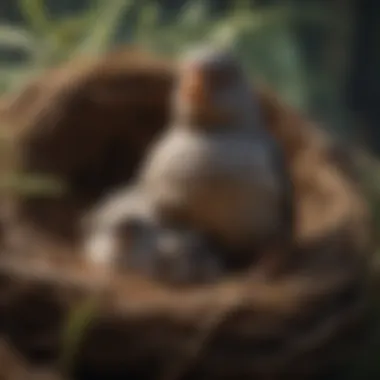
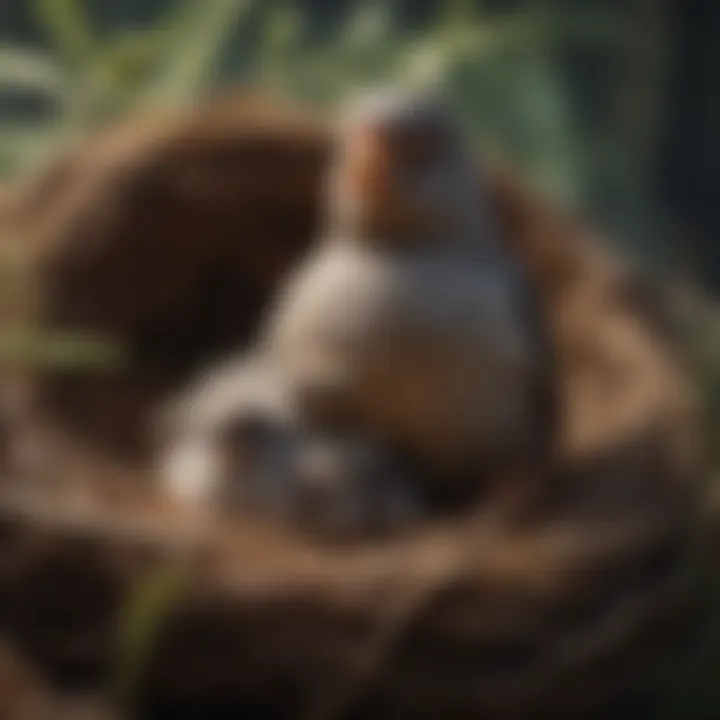
Creating an inviting habitat for pet birds can feel a bit like arranging a cozy nest. First up, the cage or aviary design is of paramount importance. The enclosure must be spacious enough to allow for natural behaviors such as flying and playing. Birds are not known for their love of confinement; cramped quarters can lead to stress, which is a recipe for disaster when it comes to breeding.
Consider including elements such as stable perches, appropriate nesting boxes, and varied toys that cater to their instinctive needs. For example, a parakeet or cockatiel might appreciate a snug nesting box made of wood, while other species may prefer more open breeding settings.
Temperature is another key factor. It’s ideal to keep the environment at a stable, moderate temperature—neither too hot nor too cold. A constant climate fosters a sense of security and can stimulate breeding behaviors. It’s also important to minimize disruptions; loud noises and constant foot traffic can interrupt their natural routines.
- Key Aspects of Habitat Setup:
- Ensure ample space for movement
- Provide diverse perches and nesting options
- Maintain a comfortable and stable temperature
- Limit disturbances to promote natural breeding behaviors
Nutrition and Health Requirements
Nutrition plays a pivotal role in breeding success. Birds need a well-rounded diet to ensure they are fit for breeding, as their physical health is closely linked to their reproductive capabilities. A balanced diet typically consists of high-quality seed mixes, fresh fruits, vegetables, and, sometimes, specialized pellets, depending on the species.
When it comes to supplementation, providing calcium is particularly important for layers. Female birds require additional calcium in their diet to support egg production. A serious lack of calcium can lead to health complications, including fragile eggs and poor breeding outcomes. It’s wise to incorporate natural sources of calcium like cuttlebone or leafy greens.
Additionally, routine health check-ups are non-negotiable. Monitoring for signs of illness—such as changes in behavior or droppings—can keep your breeding program on track. Consider creating a vet schedule that aligns with the breeding cycle, allowing for timely interventions if any health issues arise.
- Essential Nutritional Elements:
- Quality seed mixes with varied ingredients
- Fresh fruits and veggies for vitamins
- Calcium sources for egg-laying females
- Regular health check-ups to catch issues early
To sum it up, preparing for breeding isn’t just a checklist; it’s a critical underpinning of the whole process. Giving your pet birds the right habitat and nutrition sets the course for a successful breeding experience. If you set things up right from the get-go, you’re laying the pathways to rewarding and responsible breeding outcomes.
"Preparation is the key to success in breeding. Without it, you may find yourself with more heartache than happiness."
This preparation stage forms the bedrock upon which the breeding process is built, ensuring that pets and their human companions thrive in their pursuit of new life.
Breeding Processes
The breeding processes are the backbone of pet bird breeding, defining not just the pathways to new life, but also the experiences, strategies, and responsibilities that come with it. With all that fluttering around, it’s essential for potential breeders to understand what needs to happen at each step. From mating rituals to the careful care of chicks, every element plays a crucial role in ensuring the health and vitality of both the birds and the future lineage.
Mating Behaviors and Signals
The first step in the breeding process involves understanding the mating behaviors and signals that birds exhibit. Each species has its own unique courtship rituals that convey readiness and compatibility. For instance, many birds perform intricate aerial displays, singing soft melodies, or engaging in gentle bill rubbing to attract a mate.
Observational skills are key here. Breeders should watch for certain signals such as:
- Feeding behaviors: Males often present food to females. If a female accepts the offering, it's a good sign of her receptiveness.
- Body language: Puffing up feathers, tail raising, or side-to-side movements can indicate readiness to mate.
- Nest preparation: If birds start collecting nesting materials, it could signal that they are ready to breed.
Getting these signals down pat can save a lot of guesswork. Knowing when to intervene or let nature take its course is an art within the science of breeding.
Egg Laying and Incubation Techniques
Once mating has occurred, the next significant phase is egg laying and incubation. The timing can vary based on the species, with some birds laying eggs as soon as days after mating while others may take weeks. Once eggs are laid, the care for them is of the utmost importance.
Breeders should keep in mind:
- Environment: The location for the nest should be safe, quiet, and somewhat secluded to protect the eggs from stressors.
- Temperature and humidity: Different species have varying requirements for incubation. Keeping the eggs in the correct temperature can drastically affect hatch rates. Generally speaking, between 99 to 101 degrees Fahrenheit is ideal for many species.
- Turning the eggs: If using an incubator, gently turn the eggs several times a day to mimic the mother’s natural behavior.
Adhering to these practices enhances the chances of successful hatching, leading to strong, healthy chicks.
Chick Rearing and Care
After the eggs hatch, the next chapter in the breeding process doesn’t slow down. Rearing chicks is an intensive task that requires both observation and dedication. Newborn chicks, often blind and featherless, depend entirely on their parents for survival.
To ensure the health of these vulnerable creatures, one must consider:
- Feeding: For species such as budgerigars or cockatiels, the parents will feed chicks a specialized diet rich in proteins. If hand-rearing, breeders may need to use formulated chick food, ensuring they follow appropriate schedules to nourish the growing birds properly.
- Socialization: Interaction is essential. Young birds raised in a stimulating environment tend to be healthier and more social. Providing a mix of activities will foster better development.
- Monitoring health: Just like human babies, chicks can get sick. Regularly check for signs of distress, and consult avian veterinarians if something seems off.
The first few weeks are crucial, not just for survival but for development. Engaging with chicks can shape their personalities and future behavior.
The breeding processes encompass a myriad of steps that, when handled with care and expertise, can lead to successful outcomes. Each phase, from mating behaviors to chick rearing, fuels the chain of life, underlining the responsibilities of dedicated breeders.
Post-Breeding Responsibilities
After the thrill of seeing your pet birds become proud parents, the responsibility doesn't end there. Post-breeding responsibilities are just as crucial to the success of raising healthy, happy chicks and ensuring a smooth transition for both the birds and their new owners. Understanding this phase can make a world of difference in how well the breeding experience is managed and can impact the welfare of the offspring.
Evaluating Bird Health and Development
Once the chicks hatch, careful monitoring is essential. First off, you’ll want to keep a watchful eye on their health. Newly hatched chicks can be particularly delicate and any signs of distress or poor development should be addressed immediately. Common health indicators to watch for include:
- Weight gain: Chicks should steadily gain weight over the first few weeks. Any stagnation could signal an issue.
- Activity levels: Healthy chicks are typically active and can be seen moving around their habitat.
- Feather development: As they grow, look for signs of proper feathering, indicating good nutrition and overall health.
Regular checks on the parent birds are also important. They’ll need to be in good condition to continue caring for their young. This means assessing their diet and stress levels, as well as ensuring they have a clean and safe environment. Remember, a healthy parent is a key to the health of the chicks.
Providing the right conditions for growth is also crucial. As the chicks grow, their needs change. From providing a balanced diet rich in nutrients to ensuring that they have ample space for exercise and exploration, each step in their development can set the stage for a bright future.
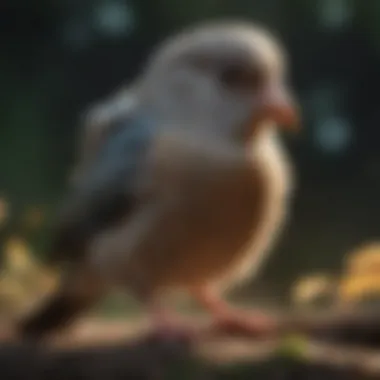
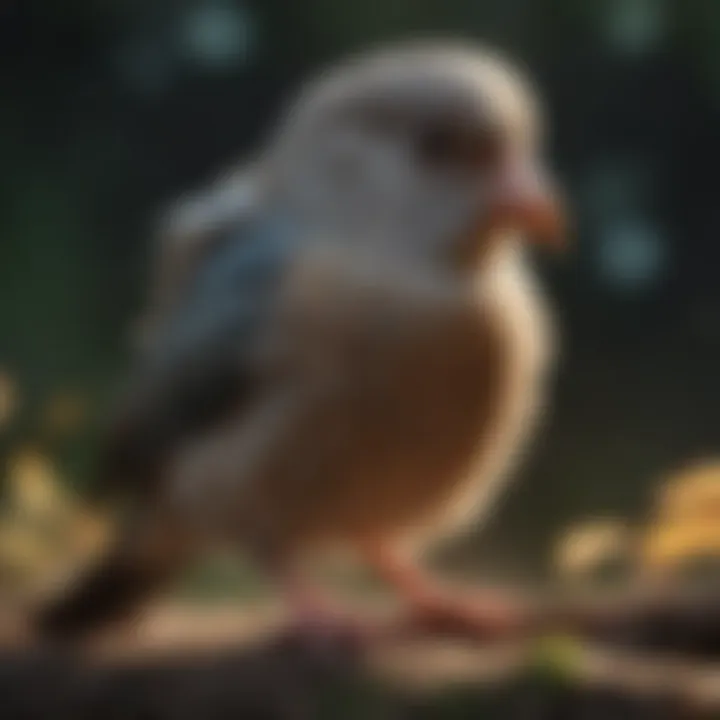
"Monitoring a bird’s development is not just about health; it's about fostering an environment where they can thrive."
Finding Responsible Homes for Offspring
Once the chicks are old enough to leave the nest, the next challenge is finding responsible homes for them. This is perhaps one of the more daunting aspects of breeding, yet it holds immense significance. You as a breeder want to ensure that each feathered friend is placed in a loving environment, where they will receive ample care and attention.
Firstly, consider utilizing an application process for potential adopters. This can include:
- An interview: Get to know the prospective new owner’s experience with birds, their living arrangements, and their understanding of the species.
- Home checks: If possible, checking the applicant's living situation can be revealing, allowing you to ascertain that it is safe and suitable for the bird.
- Education: Providing educational materials or sessions on bird care ensures they are prepared for their new responsibilities.
Moreover, always provide a contract that outlines the welfare obligations of the new owner. This can cover health checks, dietary needs, and even behavioral traits to watch out for. It’s important that new owners are aware of the long-term commitment they are making.
In essence, these post-breeding responsibilities lay the groundwork for ensuring the well-being of both the offspring and their future families. The choices made during this phase will reverberate throughout their lives.
The Ethical Side of Bird Breeding
Bird breeding goes beyond the science of genetics and the art of nurturing. At its core, it hinges on ethical considerations that shape the practices and responsibilities of breeders. The welfare of birds, alongside a commitment to responsible breeding, presents a framework that every pet bird breeder must navigate. This segment delves into the key elements of ethical breeding, shedding light on how integrity and accountability intertwine in creating thriving avian communities.
Understanding Breeding Ethics
Ethics in bird breeding encapsulates several principles that guide breeders in their decisions. First and foremost, it infers the spirtual connection one has with these creatures. Acknowledging that birds can experience stress, discomfort, or even suffering under poor breeding conditions is pivotal. The breeder's duty extends to ensuring not only the health of the individual birds but also the integrity of their species.
When considering breeding ethics, key aspects include:
- Informed Decision-Making: Breeders must educate themselves about proper breeding techniques and the specific needs of the species they choose. This eliminates the chances of hasty decisions that could lead to negative short- or long-term impacts.
- Transparency: Open communication with potential buyers is crucial. This includes sharing details concerning the bird's lineage, health history, and any challenges faced during breeding. Ensuring that the buyer knows what to expect helps to prevent potential rehoming or neglect incidents down the line.
- Post-Breeding Support: A responsible breeder should commit to supporting new owners with guidance and resources well into the future. This fosters a community where bird owners feel less isolated and are better equipped to care for their feathered companions.
"Ethical bird breeding is not merely about producing birds but about safeguarding their welfare and promoting a vibrant environment for future generations."
Preventing Inbreeding and Health Issues
One of the most pressing ethical concerns in pet bird breeding is inbreeding. This practice can lead to various health issues that may compromise the lives of these birds. Inbreeding occurs when birds that are closely related mate, increasing the likelihood of genetic disorders. To navigate this issue responsibly, breeders should keep the following points in mind:
- Genetic Diversity: It’s essential to maintain a diverse gene pool. This can be achieved by introducing new birds into the breeding program. Understanding the gene backgrounds of breeding pairs helps avoid repetition of genetic traits, which can allow potential health problems to emerge.
- Regular Health Assessments: Regular checkups with a veterinarian ensure that breeding birds are healthy and free of hereditary conditions. By doing so, breeders not only protect their current stock but also minimize risks of passing down health issues to the chicks.
- Documenting Lineages: Keeping detailed records of the birds’ genealogies allows breeders to track bloodlines effectively. These records should include health screenings, behaviors, and traits, offering a clearer picture of what to expect from breeding choices.
Maintaining the health of both the breeding stock and the resulting offspring is more than just a best practice. It's also a moral obligation to provide pets that are as vibrant and lively as nature intended.
By adhering to ethical principles in bird breeding, breeders can contribute positively to the world of avian companionship and ensure a future where our feathered friends can thrive.
Customer Education and Support
When diving into the realm of pet bird breeding, education stands as the cornerstone for both novice and seasoned breeders. Proper guidance can make the difference between a successful breeding experience and a series of challenges that could easily be avoided. Customer education and support are vital elements that create a robust foundation for the community of bird lovers. This section illuminates why educating new bird owners and fostering a community of responsible breeders is essential.
Guiding New Bird Owners
The journey for any potential bird owner begins with a wealth of questions and uncertainties. It is essential to provide comprehensive education that addresses various aspects such as species compatibility, behavioral characteristics, and proper care. New bird owners often underestimate the commitment involved, both in time and resources.
- Feeding: Understanding the nutritional requirements of different species is crucial. Birds have unique dietary needs that vary markedly across species. For instance, a cockatiel's needs differ from those of a parrot, and feeding them the wrong diet may lead to health complications.
- Environment: Guidance on creating a safe and stimulating habitat should not be overlooked. New owners must learn about cage size, enrichment activities, and socialization to help their new companions thrive.
- Veterinary Care: Educating pet owners about the importance of routine health check-ups can prevent unexpected emergencies. Identifying a vet familiar with avian medicine ensures birds receive the appropriate care.
Through workshops, informational brochures, and online resources, breeders can help foster a better understanding of bird ownership. As the saying goes, "a bird in the hand is worth two in the bush"—wise preparation can prevent a flock of problems down the line.
Creating a Community of Responsible Breeders
Breeding cannot be a solitary endeavor. The establishment of a community among breeders serves to enhance the overall quality of bird breeding practices. By creating networks where breeders can share experiences, challenges, and solutions, the community grows stronger. There are several ways to cultivate such a supportive environment:
- Online Platforms: Social media groups or forums on platforms like Reddit and Facebook can facilitate discussion and allow breeders to share insights.
- Local Breeding Clubs: Forming or joining clubs where breeders can meet in person encourages knowledge exchange and camaraderie. It allows for the sharing of success stories and the challenges faced during breeding.
- Educational Seminars: Offering workshops led by experienced breeders can provide newfound skills and knowledge. Topics could include advanced genetic practices, ethical considerations in breeding, and health monitoring.
Promoting ethical practices is also paramount. Breeders must be vigilant against potential pitfalls like inbreeding or neglecting the health implications of breeding decisions. By advocating for responsibility, breeders can ensure that they are not only producing healthy and happy birds but also contributing to a legacy of informed breeding.
"Educating others about the responsibilities of bird ownership is the first step in fostering a community grounded in care and ethics."
Future Trends in Bird Breeding
Understanding the future trends in bird breeding is more than just staying ahead of what’s new; it’s about ensuring that breeders are prepared to adapt to changing environments and responsibilities. As society increasingly places emphasis on ethical breeding and sustainable practices, it is crucial for current and prospective breeders to understand the significance of these shifts. The breeding world is evolving, where technological advancements and a greater awareness of conservation play pivotal roles in shaping best practices.
Advancements in Breeding Techniques
The landscape of bird breeding is undergoing substantial transformation, largely fueled by innovations in breeding techniques. One prominent advancement lies in selective breeding, which allows breeders to choose desirable traits, leading to a healthier and more vibrant breed. This practice, while beneficial, puts a premium on genetic understanding, showcasing the importance of basic genetics before striving for the perfect feathered companion.
- Genomic Analysis: This technology helps in identifying genetic markers that predict traits and health issues. The output enables breeders to make informed decisions.
- Artificial Insemination: For certain species, this method not only improves genetic diversity but also helps overcome physical barriers that prevent mating.
Breeders are increasingly leveraging technology to enhance breeding efficiency. Keeping records digitally or utilizing software designed for breeding can streamline operations, making it easier to track lineage and health conditions. In addition, ongoing research into behavioral studies influences how breeders approach pairing and care, leading to happier and more adaptable birds.
Sustainability and Conservation Efforts
Sustainability in bird breeding is not just a buzzword; it’s a necessary approach that goes hand-in-hand with responsible breeding practices. As more breeders recognize the importance of protecting natural habitats, conservation efforts are becoming part and parcel of breeding programs. Incorporating sustainability means breeders have to think about how their practices impact the environment and the species they love.
Some key aspects include:
- Responsible Sourcing: Breeders are being urged to source candidates from ethical suppliers or breeding programs that prioritize animal welfare and diversity.
- Minimizing Environmental Impact: This involves choosing sustainable materials for cages and habitats, as well as implementing eco-friendly practices in everyday operations.
- Public Awareness Campaigns: Educating the public about the plight of wild bird populations and the importance of conservation, while promoting adoption over purchasing from stores.
Efforts made today will pave the way for the next generation of bird enthusiasts and breeders. By integrating these sustainable practices, breeders not only contribute to a healthier environment but also ensure that the joy of owning pet birds continues for many years to come.
"The future of bird breeding rests not only in the hands of breeders but in our commitment to sustainability and conservation."
With these shifts on the horizon, understanding future trends in bird breeding becomes a vital part of cultivating a responsible and thriving community.







